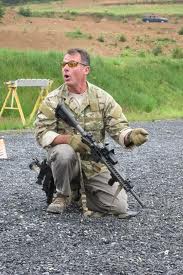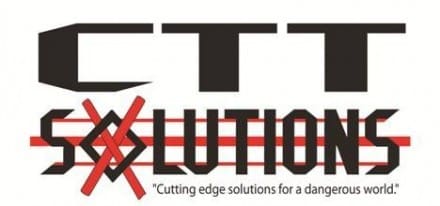Anyone that wants to refine and enhance their chosen trade must follow this simple logical process of critical thinking: establish a desired end-state and then: know what you do, why you do it, how it works, where the common failure points are and why it is the best solution. Then you will be able to defend it against competing solutions or techniques when challenged. That is impossible when undefined or misdefined terms are used.
Often instructors will invoke the “fine versus gross motor skill” argument to justify or invalidate a technique without ever defining the terms. Truth be told many don’t even know what each term means. The below definitions should illuminate where these have gone awry and when they do properly apply.
Because the motor skills used for weapons handling at times may not lie specifically on one side or the other of the definition it is often taken as all skills are fine motor functions (think slow precise trigger pull on a precision shot versus a rapid pull of the trigger on a short range rapid string as an action using both). Two perfect examples of gross motor skills that are mischaracterized as fine motor skills are releasing the bolt via the bolt catch on an Stoner pattern rifle and the slide via the slide stop on a pistol. Neither involves “a refined use of the small muscles controlling the hand, fingers, and thumb.” Both are in fact either the use of the locked wrist, extended thumb and the entire arm on an M4 bolt release or the complete clenching of the hand on a pistol to release a slide stop given appropriate hand size or the use of the support side thumb to release the slide. Both when done properly place the hand on an anchor point on the weapon as a way to rapidly and precisely orient the active hand and thumb to the necessary location (tactile index points). Tactile index points are the magazine well on an M4, or a proper grip on a pistol when using either the dominant or support side thumb.
***How could a shooter effectively operate a trigger or magazine release on a pistol or carbine but not be able to operate the slide stop or bolt release?***
• “The term gross motor skills refer to the abilities usually acquired during infancy and early childhood as part of a child’s motor development. By the time they reach two years of age, almost all children are able to stand up, walk and run, walk up stairs, etc. These skills are built upon, improved and better controlled throughout early childhood, and continue in refinement throughout most of the individual’s years of development into adulthood. These gross movements come from large muscle groups and whole body movement.”
• “Fine motor skills can be defined as coordination of small muscle movements which occur e.g., in the fingers, usually in coordination with the eyes. In application to motor skills of hands (and fingers) the term dexterity is commonly used. The abilities which involve the use of the hands develop over time, starting with primitive gestures such as grabbing at objects to more precise activities that involve precise hand-eye coordination. Fine motor skills, are skills that involve a refined use of the small muscles controlling the hand, fingers, and thumb. The development of these skills allows one to be able to complete tasks such as writing, drawing, and buttoning.”
The terms used to frame a discussion and the definitions of those terms must be correct or all subsequent assertions will be incorrect. Skill and knowledge rarely exist apart from each other.
-Mike Pannone
Terms quoted or adapted from:
A Topical Approach to Life-Span Development
John W. Santrock, PhD University of Texas at Dallas
ISBN: 0073382647
Copyright year: 2008
 Mike Pannone retired from the Army’s premier assault force (1st SFOD-D) after an explosive breaching injury. A year after his retirement America was attacked on 9/11 and he returned to help serve his country as the head marksmanship instructor at the Federal Air Marshals training course and then moved to help stand up the FAMS Seattle field office. In 2003 he left the FAMS to serve as a PSD detail member and then a detail leader for the State Department during 2003 and 2004 in Baghdad and Tikrit.
Mike Pannone retired from the Army’s premier assault force (1st SFOD-D) after an explosive breaching injury. A year after his retirement America was attacked on 9/11 and he returned to help serve his country as the head marksmanship instructor at the Federal Air Marshals training course and then moved to help stand up the FAMS Seattle field office. In 2003 he left the FAMS to serve as a PSD detail member and then a detail leader for the State Department during 2003 and 2004 in Baghdad and Tikrit.
In 2005 he served as a ground combat advisor of the Joint Counter IED Task Force and participated on combat operations with various units in Al Anbar province. Upon returning he gave IED awareness briefings to departing units and helped stand up a pre-Iraq surge rifle course with the Asymmetric Warfare Group as a lead instructor. With that experience as well as a career of special operations service in Marine Reconnaissance, Army Special Forces and JSOC to draw from he moved to the private sector teaching planning, leadership, marksmanship and tactics as well as authoring and co-authoring several books such as The M4 Handbook, AK Handbook and Tactical Pistol shooting. Mike also consults for several major rifle and accessory manufacturers to help them field the best possible equipment to the warfighter, law enforcement officer and upstanding civilian end user. He is considered a subject matter expert on the AR based Stoner platform in all its derivatives.
Gunfighter Moment is a weekly feature brought to you by Alias Training & Security Services. Each week Alias brings us a different Trainer and in turn they offer some words of wisdom.
Tags: Alias Security and Training Services, CTT Solutions, Mike Pannone



omg thank you mr pannone for bursting the collective bubbles of any number of “flat earthers” who don’t get the direct correlation of your pistol slude stop/trigger manipulation. its always interesting to hear the non-answers you get from those that think slide stops/releases kill but think pulling the trigger won’t be any problem at all when you confront them with their belief. ts about training, plain and simple. thanx for the insight!
Spot on Mike – I make the exact same point in my classes
Well done
I concur. The slide stop debate never got too far once I point out that a byproduct of utilizing a slide pull to release the slide is increasing strong had grip strength to counter the weak hand pulling the weapon at the slide. If you aren’t able to relax your strong hand in that millisecond in an attempt to isolate your trigger finger…is it really worth the technique? A fast slide like reload in order to curl a round out of a vital shouldn’t be the end state one should strive for.
The only “advantage” to making use of the slide stop as a “release” is to save about 0.5 second on a slide lock reload, for right handed shooters who have fingers long enough to reach the lever without shifting their grip. It’s only a useful or relevant skill if the slide locks open 100% of the time the gun runs empty, which doesn’t always occur, due to magazine problems or shooter grip issues, particularly with high grips and thumbs forward grips. It only saves that 0.5 second if the shooter executes the technique successfully. Any difficulty in pressing the lever that must be corrected by shifting the grip or using the support hand and the minimal speed advantage is lost.
Those with shorter fingers gain no advantage, unless an extended slide lever is installed – which can produce problems of its own, such as the slide not locking back, if a thumbs-forward grip is used that keeps the lever pressed down all the time. For left handers, use of that technique is more difficult than full slide retraction, except for the very small number of gun models (M&P) that have ambidextrous slide lock levers.
When the slide is in the “locked” position, the slide is not at full retraction and the recoil spring is not at full compression, so if your pistol has any problem feeding rounds from the magazine into the chamber without a full slide stroke, using the lever may not work as effectively as pulling the slide to full retraction.
Learning how to use the slide lock as a “release lever” is an unnecessary skill. Full hand slide manipulation has to be learned, because it’s essential to malfunction clearing and general operation of the pistol. That skill can be used in every situation in which a “slide release lever” technique can be used. I don’t understand why some have an irrational, emotional attachment to defending the instruction or use of a skill that is only useful for a subset of students, in special situations, when a general purpose skill, applicable to all students in all situations, exists.
Those reasons – not the ‘fine’ vs ‘gross’ argument strawman you attack here, are the reasons I don’t teach use of the slide lock lever as a “release” to my students, except for those specifically focused on winning IDPA matches.
O.5 seconds is a long time.
If the slide dosent lock back, the gun/magazines needs to be serviced and the shooter’s grip fixed.
With most guns now having different sized back straps and even grip reduction, even small handed people can use the best technique.
If your pistol dosent chamber a round from slide lock, it’s not servicable.
Getting hung up on the nomenclature you got from the manual written by lawyers is a pretty novice move, considering most manuals call it a “magazine catch”.
How did anyone ever reload a revolver considering you might have to push a button forward, or backwards, to release the cylinder?How about a break-open shotgun?A thumb safety to just about anything?
KR, look at the above shooters resumes before you go full retard on topics like this.
I’ve had this same argument with people about the Tac Reload v. Speed Reload. Again the argument is that holding 2 mags in your hand is a “fine motor skill”. I pull the trigger finger argument but that is usually dismissed by the naysayers.
Ultimately shooting a weapon ONLY involves Gross Motor Skills.
Threading a needle is a fine motor skill, putting a 3/16th nut on a bolt is a fine motor skill, picking a lock is a fine motor skill.
Pushing a button, slide release (no matter how you do it), trigger, etc are all gross motor skills.